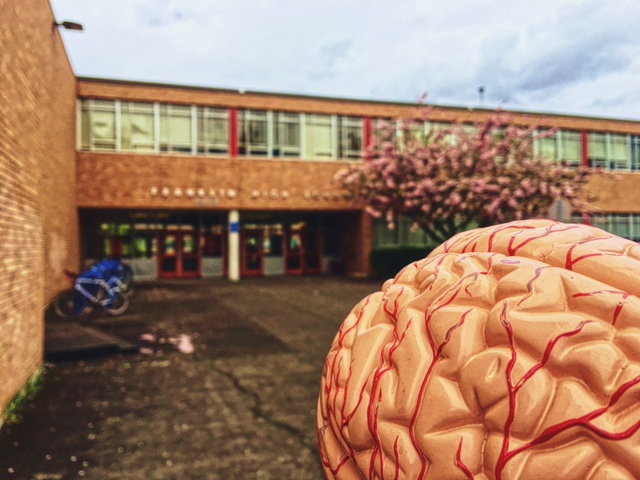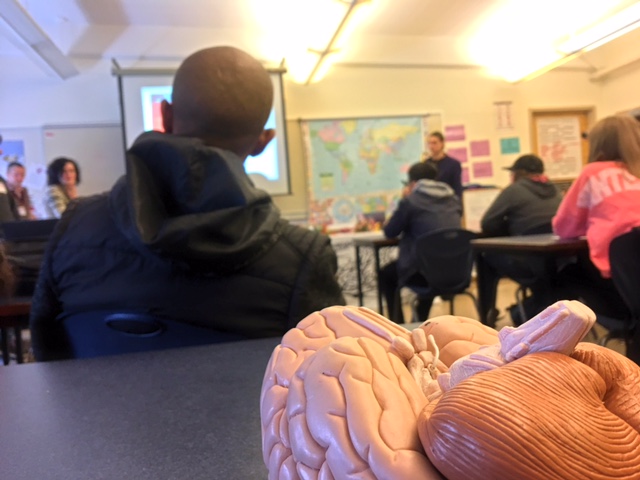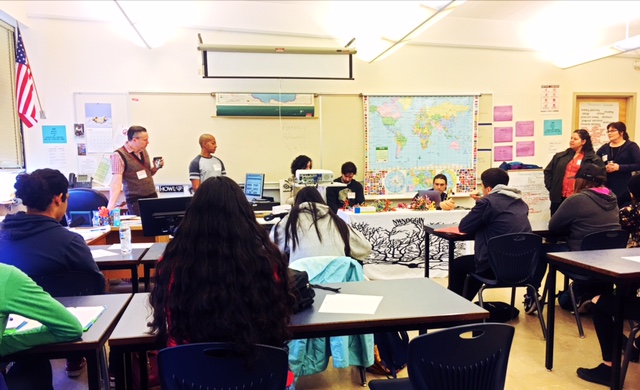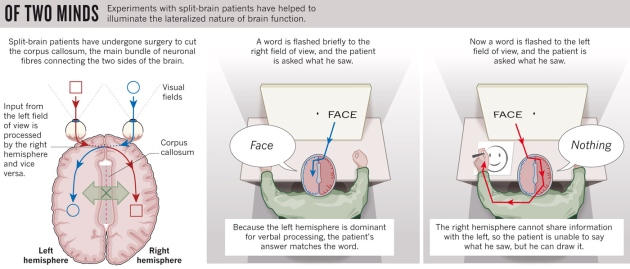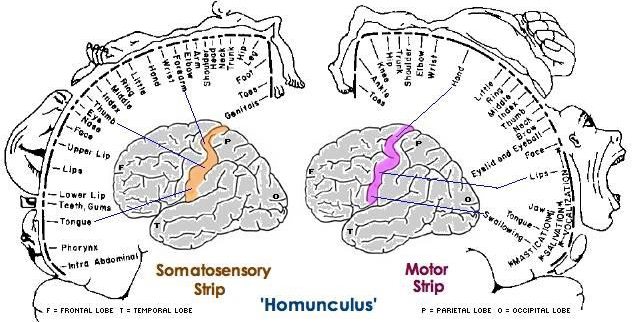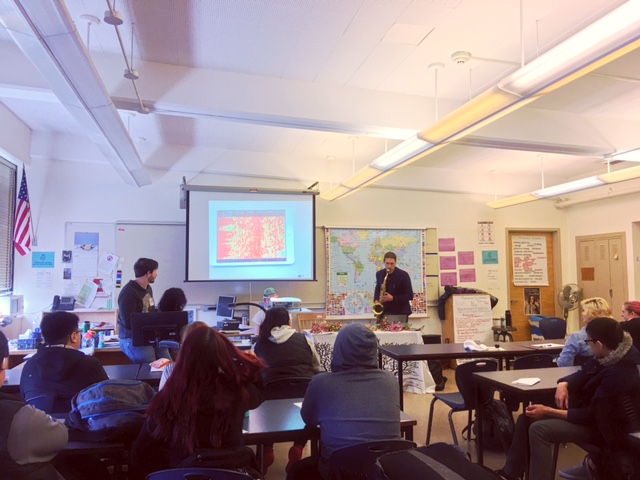By Binyam Nardos, Noggin Resource Council member for OHSU
The general topic of the day at Portland’s Franklin High School was “music and the brain.” But as is often the case when young minds get together with neuroscientists, it didn’t take long before the conversations started covering all sorts of neuroscientific topics. We talked about the neural basis of Parkinson’s disease, and the treatments available to-date. A number of students shared personal stories about their experience with family members affected with the neurodegenerative disease.
We also talked about how the two brain hemispheres communicate via a dense band of axonal wiring known as the corpus callosum (“hard body”), which led to discussions of Mike Gazzaniga’s experiments on split brain patients who had their corpus callosum severed to prevent damaging epileptic seizure activity from crossing from one hemisphere to the next…
The sensory-motor homunculus was a hot topic as the students had discussed the topic in their psychology class prior to our arrival. Although a little unsure how the topic may be received, I decided to share stories taken from V.S. Ramachandran’s Phantoms in the Brain about the effects of severed limbs on the plasticity of the sensory homunculus.
LEARN MORE: The split brain: A tale of two halves
The students got a kick out of the phenomenon in which people with severed limbs can sometimes sense their phantom limbs during sensory stimulation of their genitals, owing to the fact that neural activity from those sensations start invading into the cortical maps dedicated to the now absent limbs.
Of course the main event of the day featured Wenzl McGowen, a member of the band Moon Hooch, playing on his saxophone, while Brittany Alperin from Behavioral Neuroscience at OHSU displayed the EEG-based brain activity of volunteer students on screen..!
This was a huge hit. Students got to reflect on how the different frequency bands of EEG activity were affected by not just music-listening but arousal-related activity elicited by Bill’s unexpected and famously loud hand-claps likely capable of waking the dead.
This was a positively well-spent morning….certainly for me, and am sure for the students as well. We laughed, talked about research, listened to music and got reminded how much non-neuroscientists know and care about the brain.



